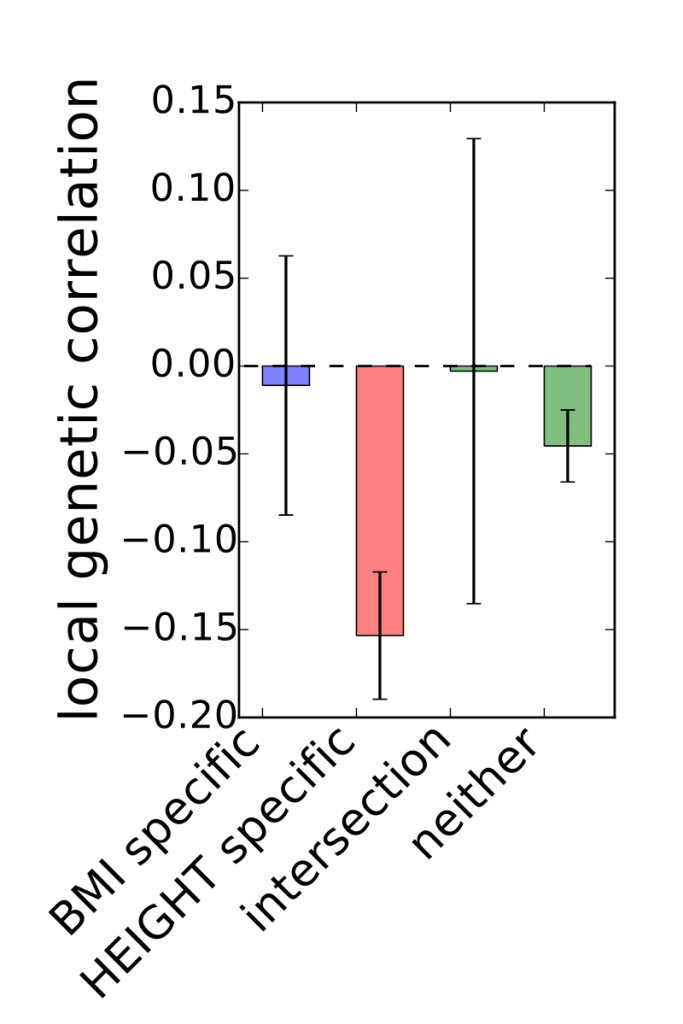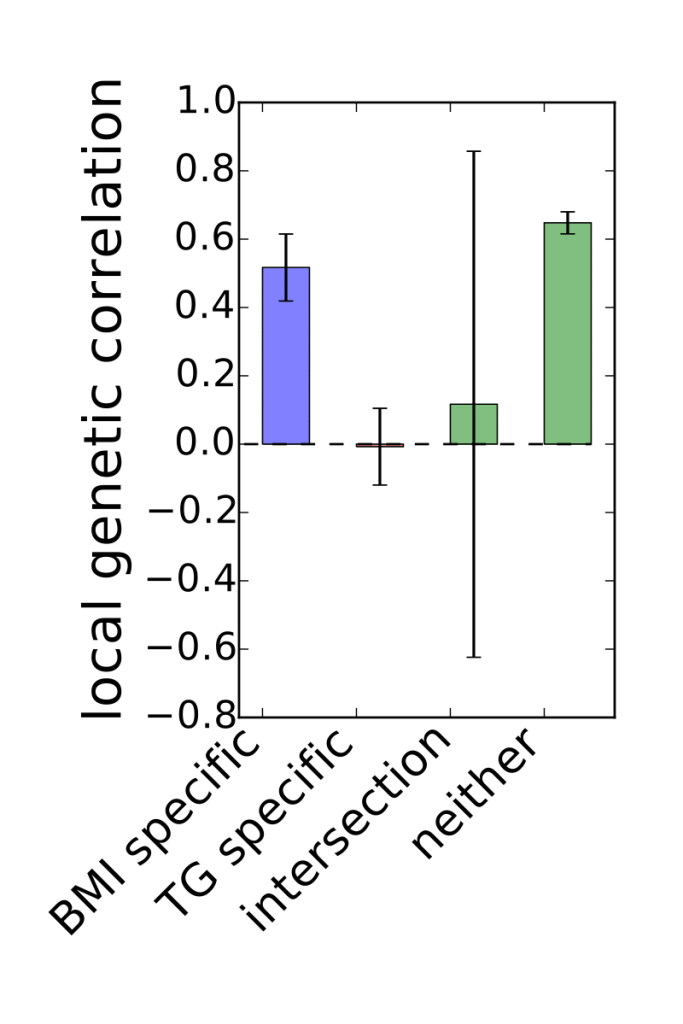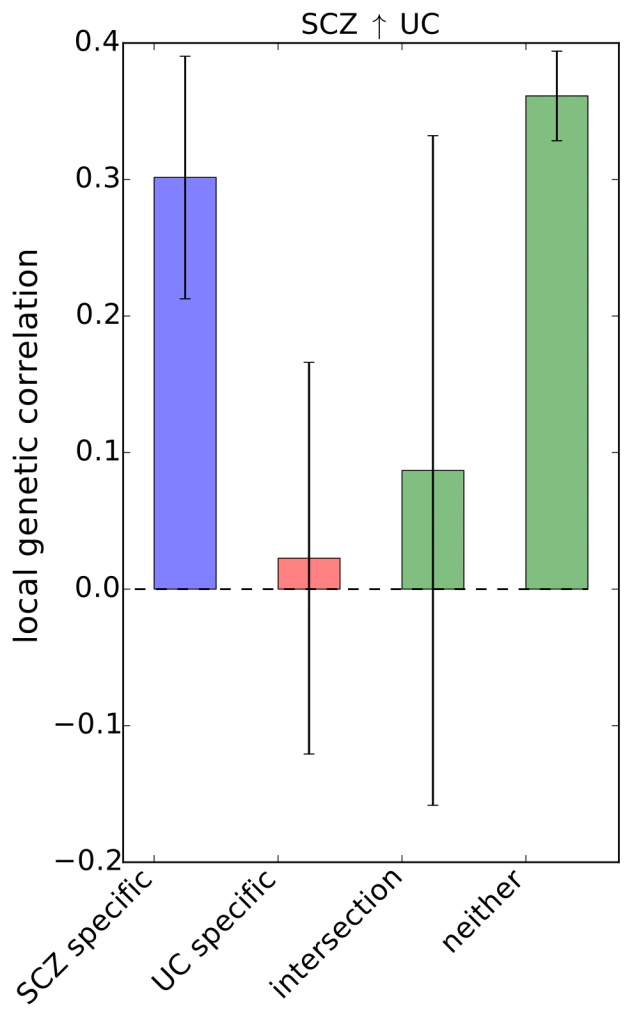Insights from ‘zooming in’ to look at Local Genetic Correlation using Summary Statistics (ρ-HESS)
By Robert Smith, Huwenbo Shi, and Nick Mancuso, February 8th, 2018
Rho-HESS, a method recently developed in our lab by Shi et al. 2017 (Local genetic correlation gives insights into the shared genetic architecture of complex traits), quantifies the correlation between pairs of traits due to genetic variation at a small region in the genome. For example, height and BMI are correlated complex traits–by ‘zooming in’ to relevant genomic sections this method can identify individual loci affecting both traits.

Similar studies have previously looked at specific genomic regions using individual-level DNA. In 2015, we saw the development of a method called “Cross Trait LD Score Regression” by Bulik-Sullivan, Finucane et al. which estimated genetic correlation between complex traits genome-wide, using only summary statistics. Similar to this method, Rho-HESS also only requires the use of summary statistics, but instead of looking genome-wide, we zoom in to uncover and analyze the underlying genetic architecture of a specific region.
In contrast with LD Score Regression which limits information on the correlation between traits to the entire genome, our approach identifies individual loci allowing us to explain why we observe genome-wide genetic correlation. Take, for example, several genetic loci which are both positively and negatively correlated. The genome-wide approach will average these, leading to missed signal, and fail to provide insight. Rho-HESS, on the other hand, will identify meaningful correlations at the level of the loci in the underlying architecture which can be powerful particularly when it comes to trying to understand underlying disease mechanisms.
This ability led us to our first conclusion, which is that a trait may have no genome-wide correlation although several individual loci within the region may be strongly correlated. For example, Rho-HESS found that this was the case for HDL and LDL fatty acids.
Rho-HESS can also be used to infer putative causality among complex traits. This means we can use it to determine whether one trait is affecting another trait. Our study isolated 36 complex traits which were put together into 630 unique pairings to analyze the causal relationship between the two (if any). For example, it found that body mass index increases the level of triglycerides and that schizophrenia affects ausoritive colitis (bowel disease).


